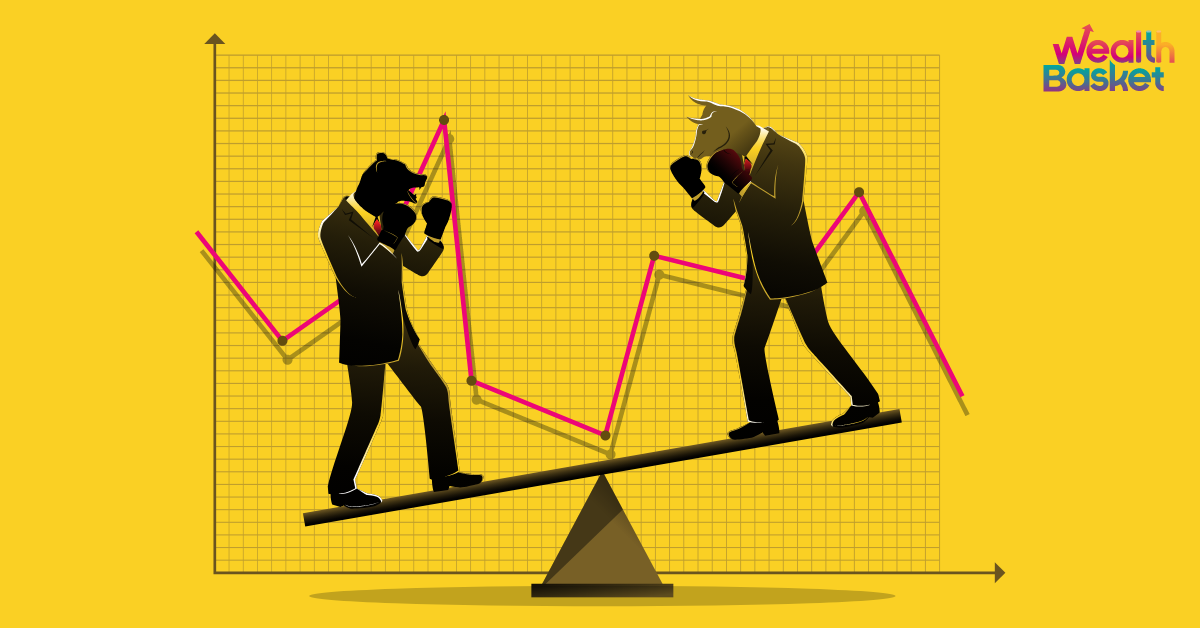Investors are often in a dilemma about buying a few units of high-priced stocks or more units of low-priced stocks. After all, high-priced stocks often reflect the market’s confidence in their prices and hence their quality. At the same time, low-priced stocks lure investors because of their quick growth potential.
This article talks about the risk and volatility factors of low-priced stocks and high-priced stocks and the differences between low-priced and high-priced stocks.
What are Low-Priced Stocks?
As the name suggests, low-priced stocks are those that trade at a lower price on the stock exchanges. Some financial analysts state that stocks with price below ₹20 are low-priced stocks. However, there is no clear definition, and the comparable price may change over time. In general, we can say low-priced stocks are the ones which trade at a price such that one unit of it can be easily bought by a common man without thinking twice about it.
Volatility Of Low-Priced Stocks
Volatility means how frequently and significantly a stock’s price fluctuates. Low-value shares are relatively more volatile than high-priced ones, meaning their prices can rise or fall by double or triple in a very short period.
Because these shares have lower prices, even a minor price change due to big trades tends to result in a significant percentage change. For instance, if a stock’s price jumps from ₹10 to ₹12, that’s a 20% rise. Or if a stock’s price falls from ₹10 to ₹8, that’s a 20% fall. It often happens in the case of low-price, low-volume stocks.
However, low-price but high-volume stocks may be relatively less volatile than others since liquidity risk is less in these stocks. Therefore, some investors may see them as a profitable opportunity to invest for long-term investments.
Risks Of Low-Priced Stocks
Low-priced stocks are riskier than high-priced stocks. Many times it happens that such stocks belong to not-so-established companies. Therefore, they may involve a high amount of liquidity risk, i.e., it may become difficult to buy or sell them when you want to.
Moreover, scammers may find such stocks easy to manipulate, and if that happens, there are chances of significant losses in investments.
What are High-Priced Stocks?
High-priced stocks are those that trade at a higher price on the stock exchanges. Some financial analysts state that stocks with a price over ₹500 are high-priced stocks. Again, there is no clear definition, and the comparable price may change over time.
Volatility Of High-Priced Stocks
High-priced stocks are relatively less volatile than low-priced ones, meaning their prices usually do not rise or fall significantly in a short period. As investors often consider high-priced stocks to keep for the long term, a significant price fluctuation in the short term is rare in such stocks.
Risks Of High-Priced Stocks
Stock investments inherently involve risk elements. However, high-priced stocks carry less risk than low-priced ones. Often such companies are well-established and have proven their potential over time. There may be enough buyers and sellers for such stocks most of the time, and therefore the liquidity risk is relatively lower.
High-priced stocks are usually characterised by steady growth and may take a longer investment timeframe to get good returns. Plus, high-priced stocks often have a higher price-to-earnings ratio, meaning you may need to pay a higher price for these stocks relative to companies’ earnings.
Low-Priced Stocks Vs High-Priced Stocks
| Point of difference | Low-priced stocks | High-priced stocks |
| Risk & volatility | Highly risky and more volatile | Less risky and less volatile |
| Returns | They carry higher growth potential | They provide stability and consistent returns |
| Regulations | They may be required to deal with fewer regulations as some may not even be listed. | They are the centre of attraction for regulators. |
| Who finds them suitable? | Investors seeking high returns stocks and who don’t mind the risks coming along. | Investors who prioritise the safety of investments over quick gains. |
Example
Some examples of low-value stocks in India are Vodafone Idea, Suzlon Energy, Reliance Capital, Yes Bank, Alok Industries, Uco Bank, Ujaas Energy, etc.
Some examples of high-priced stocks in India include MRF, Page Industries, Honeywell Automation, Shree Cements, Nestle India, P&G, Bajaj Finserv, etc.
Final Thoughts
You should first set an investment objective to decide whether to invest in high and low stock prices. Knowing the risk and returns elements of high-priced stocks and low-priced stocks would help you better understand what fits best to your investment goals. Thoroughly checking companies’ fundamentals before investing is always important.
Do you want to save the time required for research before investing and yet make good investments? Consider WealthBaskets by WealthDesk. These are made by SEBI-registered professionals, constitute equities and ETFs, and reflect ideas, themes, or strategies.
FAQs
Stock performance also depends on plenty of factors, and the inflation level is only one of them. However, value stocks, i.e. stock trading at lower prices than fair value, may outperform better during high inflation.
No, usually, high-priced stocks suffer from lower volatility because traded volumes for such stocks are usually higher, which reduces big trades’ overall impact on their prices.
To find the all-time high price for a stock, you may go through its price chart, which is available on various equity research websites.
There is no guarantee that all low-priced stocks are profitable. However, if the stocks are fundamentally stronger and traded at lower prices, they may offer good profits.
If you are keen on buying low priced stocks, then always check these parameters – promoter history, debt, salaries of people in management (avoid if high salary cost is involved), and average traded volumes.















